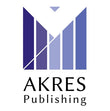Her novel deals with the experiences of the young chief's son Kierk, who grows up "between the worlds" at a young age and has to take a position.
Yes, between worlds in more ways than one. Kierk, a young warrior from the Stone Age hunter-gatherer people of the Gojdo, is drawn into the war of conquest by the first farmers and cattle breeders to push into northern Germany. He has to learn to be a leader and moves between the traditional lines of his people and those of the farmers led by Egrie, who take him into their own tribe after his escape. Kierk also has to choose between the daughter of the fire keeper of his tribe and the daughter of the agricultural prince. He has to find out who he trusts and how he feels about the innovations in livestock breeding and agriculture. Because he smells the air of war that will soon break in on him. He develops into a hunter of new achievements such as grain and bread.

In doing so, you address a drastic social change that occurred in prehistoric times and meant the transition to agriculture. How crucial was this topic in your idea generation?
That's right. With the advent of agriculture and livestock breeding, everything changed for humanity. The timing of the transition from the hunter-gatherer culture to the pastoralist and agricultural culture is historically crucial for Central Europe. For me, the tension with which such change takes place was the motivation for this novel. Ultimately, man's connection to nature also played a crucial role in this transition.
What position does your protagonist Kierk take in this?
Kierk is the involuntary border crosser. From his perspective, that of a nomadic hunter and gatherer living in harmony with nature, we can take a look at the beginning of civilization as outsiders, so to speak. Kierk learns about the great achievements of farmers and livestock breeders, but also the associated disadvantages that still have an impact today. These include deforestation, man-made climate change, loss of biodiversity, pandemics caused by disease transmission from farm animals, famines caused by dependence on one-sided food sources, just to name a few keywords.
Was it important to you that the plot fit with the current state of scientific knowledge?
Yes, because modern methods of genome analysis are currently enabling huge leaps in knowledge in archaeology. The text of the novel is based on intensive research into current findings and was written by a recognized archaeological expert of the period, Dr. Johanna Ritter, checked by the Hesse State Office for Monument Preservation. The result is the story of a “last of the Mohicans” that did not take place on the North American continent, but with great parallels in our homeland.
Please clarify this aspect a little. What scientific question are you referring to?
The question remained unanswered for a long time: Did the idea of agriculture and livestock breeding migrate from the south to Central Europe 8,000 years ago or were they conquerors who, like the European settlers, shaped the North American continent with agriculture and settlement construction and the local natives through wars, diseases and betrayal decimated. We can imagine this time in Europe as JF Cooper brought it to the memory of subsequent generations in his Leatherstocking Stories for the East of the USA.
Do you think that reading the novel can also benefit archaeologists or experts of the era?
The novel is initially conceived as an exciting adventure and love story. But it was very important to me that the descriptions in the novel were historically authentic. Thankfully, I also had professional help. However, I deliberately did not make specific discovery or excavation locations the plot locations in the novel. The settlements in the novel are located in fictitious places, but in the known settlement area of the farmers of the linear band culture. A higher population density of the coasts by Mesolithic groups is also assumed because of the food sources from the sea and large rivers. I hope that the novel can also be enjoyed by experts of the era.

What role do you see yourself playing as a novelist?
A novel offers the chance to get a different perspective on things. As a novelist, you don't primarily ask about meaning and purpose, but rather you want to breathe life into your characters. How can someone demonstrate their courage among the early farmers? A people who were not warlike for centuries and for whom hunting was not the focus? Whoosh, the farmers in the novel become fanatical wrestlers and the circular palisade structures of the ceramicists, whose purpose is not completely clear, become a bullring - which is what they were also good for. Now there is a place where young people can show their courage in the fight for the opposite sex.
Does the sudden disappearance of the Ubarutu and ultimately also the Rungi in your novel have an explanation?
In the next few years, genome analysis will help to understand how the relationships among our ancestors were and what happened when the farmers and the indigenous population met. There is evidence that parts of the indigenous population were able to survive for a long time as hunters and fishermen with their own identity alongside the expanding farmers and livestock farmers. The adoption of the rural lifestyle by the indigenous population cannot be ruled out either. There is hope that Kierk's Gojdo tribe has found a way to survive.
The interview was conducted by Christian Leeck. Machine translated from German.
Wuppertal, September 2022




